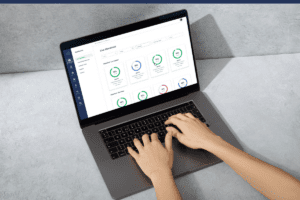The CARES Act passed by Congress last year, which included $14 billion of economic aid for postsecondary education through the Higher Education Emergency Relief Fund (HEERF), had a stipulation that institutions eligible were given one calendar year from the time they received the emergency funding to use it.
Institutions are required to allocate at least 50% of the funding to emergency financial aid grants for students. The remaining portion, however, can be utilized in a variety of ways to impact course instruction online and on-ground, improving the student experience, and maximizing student success.
If your institution still has HEERF funding available to it and is looking for ways to use the funding before the deadline, below are some common examples of how career education institutions have allocated the emergency aid.
1. Personal protective equipment (PPE)
To make sure staff and students stay safe while interacting together on-ground, many institutions have invested in PPE such as facemasks, protective gowns, gloves and more. In addition to wearable technology, many institutions have allocated funds to purchase cleaning supplies like hand sanitizer and disinfectants, as well as hardware like temperature reading devices.
2. Software to facilitate distance learning
Many institutions used HEERF funds as a main source of financing the immediate transition to distance learning. Because many institutions were building a distance learning offering from scratch, they used the funds for the software infrastructure needed for online courses, like a LMS to provide accessibility to school resources and course materials. Additionally, schools allocated funds for attendance software that allows students completing clock-hour courses to securely check in and out of class remotely.
Assessment and engagement software was also a priority for many. To create a competitive and rewarding distance learning experience and stay compliant with accreditors, institutions adopted software that allowed students to securely complete assignments and exams remotely as well as stay engaged with their classmates and instructors.
3. Technology for safe and effective on-ground training
Institutions adopted technology to increase safety while improving the hands-on training necessary in career education. For example, some institutions implemented software to document and track staff and students self-reported symptoms before arriving on campus. Others adopted safe attendance technology to minimize the spread of germs on campus and replace sign-in sheets and biometric scanners. Institutions with clinicals and/or labs also used relief funds for technology to improve learning outcomes or replace the equipment already in place.
4. Information technology resources
As many institutions rolled out distance education for the first time, institutions allocated HEERF funding to resources needed to support it, including enterprise subscriptions to software like Zoom or Microsoft Teams, online data storage, and fortified WiFi connectivity.
5. Edtech for improved student success
Many institutions used the funding available to improve the edtech they have in place to improve student success. For example, some institutions adopted retention software that enables them to leverage a proactive retention strategy.
6. Funding new departments/roles
Institutions with robust distance learning programs have specialized teams dedicated to ongoing faculty training and curriculum design. Many institutions utilized their funding to pay for salaries of staff responsible for overseeing distance learning and monitoring its success. Institutions also allocated funding to train faculty on effectively delivering online instruction.
Financing lasting changes
The deadline to use funding available to schools through the HEERF is coming close for many institutions. Click here for more information about HEERF and here for frequently asked questions.
If you’re interested in utilizing the emergency aid for technology to facilitate distance education and/or blended or hybrid courses, implement easy symptoms tracking software, or improve edtech to increase student success, fill out the form below to speak with a member of the CourseKey team.
Recent Articles

















